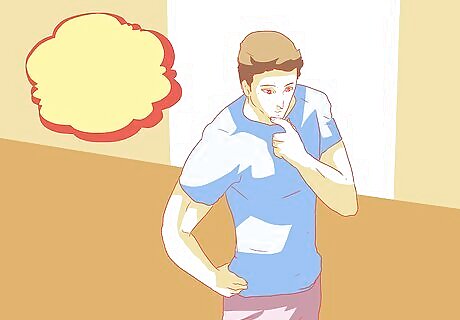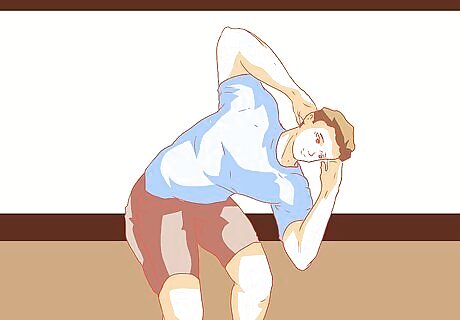
views

Ask your internist if you can do waist twists, especially if you have back problems such as scoliosis.

Do two types of waist twists: The first with full spinal rotation, the other with minimal spinal rotation.

Know your spinal flexibility limit. In preparation for doing full range waist twists, assess your limits. Stay within those limits as you perform the full range twists.

Learn the physiological details of spinal construction. Look at images of the spine and the little muscles that control bending and rotation. View images of the individual vertebrae and the nerves they protect.

Limit the repetitions for full range waist twists to five or fewer. Performing just a repetition or two would be like a yoga form. Try several different twisting yoga postures. Otherwise, perform the full range waist twist while standing with spine extended (very upright) at a slow to medium speed.

Spend most of your time doing high repetition waist twists and with your spine fixed or with minimal spinal rotation. Do at least 20 repetitions and as many as several hundred.

Do waist twists while holding a light dumbbell or other light object. This serves to strengthen and balance your musculature. Racquet sport players, or people who are not ambidextrous, should concentrate on the weak side by swinging a racquet, aerobic dumbbell or light object held in the non-dominant hand. Freestyle swimmers should breathe on both sides during the rotations. Golfers and baseball players should do some switch hitting swings in practice to balance their muscles.

Vary the position of your arms as you do waist twists. Do a set with a dowel on your shoulders, a set with your arms swinging, a set with your arms out and rigid, and a set with your hands on your hips.

Schedule these exercises into a routine which will not conflict with other exercise goals. If you are pursuing a personal record for crunches, do not try a set of high repetition waist twists before your crunches. Waist twists work the same muscles that are used for side bends and forward bends, so cut back on your waist twist repetitions when you plan to do these exercises.

Add variety to reap more benefits. For high repetition waist twist sets, always start with the basic waist twist. Use impeccable form-- standing very upright-- for at least 20 repetitions. This position will minimize spinal wear and tear and will minimize the possibility of spinal damage. Vary the exercised groups of muscles in your torso-- back, sides, front. For the back, do bent-over waist twists or do squat position waist twists. For the sides, do one-arms swings with a light dumbbell. To target the front, lean back, with or without support, as you do your waist twists. Vary your balance and center of gravity. Shift your weight from side to side and front to back when stationary. When pressed for time, or as another variation, do waist twists while walking.

Practice high repetitions as often a twice a week or as infrequently as once every three weeks.

Remember to pace yourself for the course of your lifetime. Choose the frequency of this exercise and the number of repetitions based on what your body is saying at the time. Ramp your repetitions and shorten your between set breaks based on your body feedback. Listen carefully to what your body is saying. When adding repetitions, at a new workout, do it gradually over time.

Think long-term. Maintain a well-balanced and total exercise program and include waist twists in that exercise routine.


















Comments
0 comment